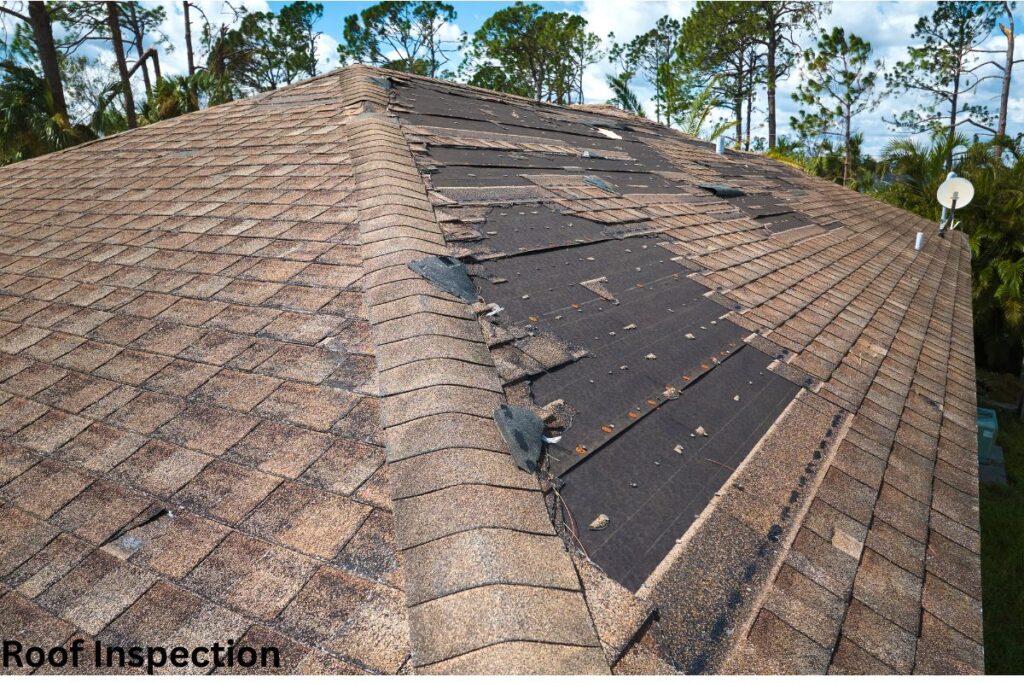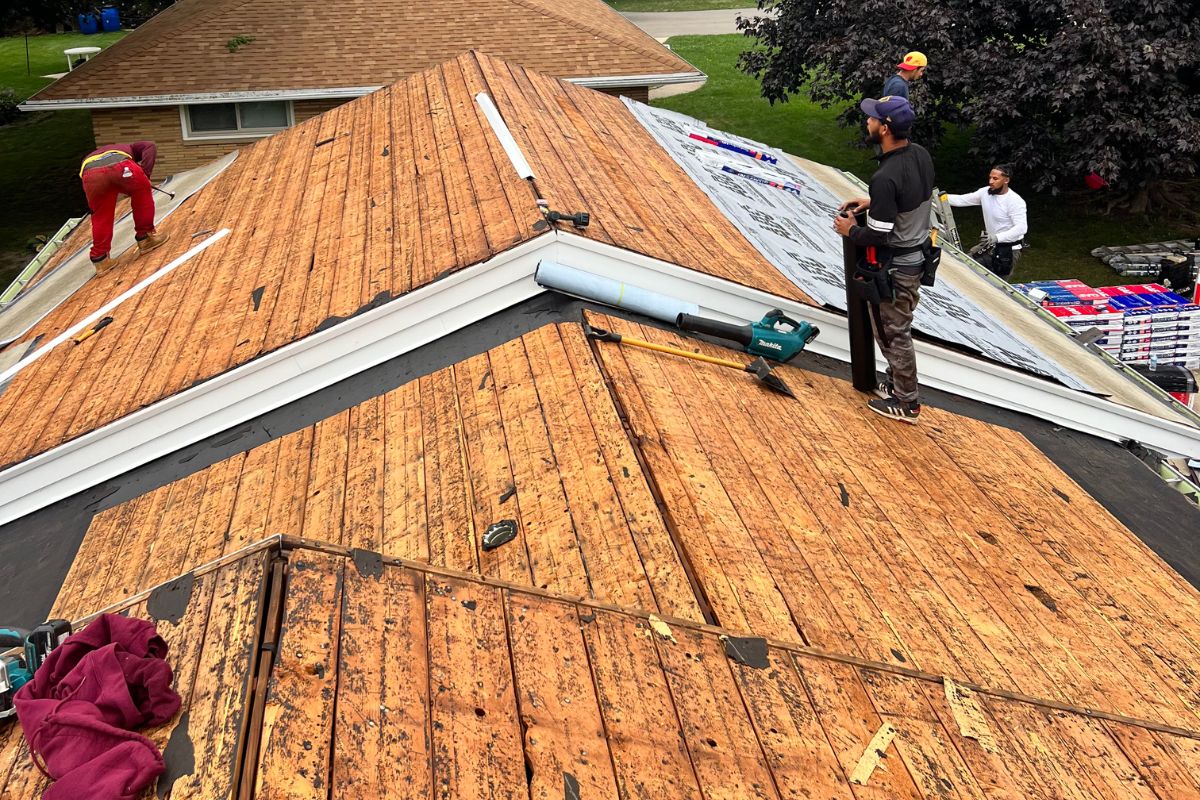Roofs represent the first line of defence a home has against external elements. From the frigid cold air to the scathing heat rays, from rain to storm, the roof has to tackle one hassle after another throughout the year.
All these make a proper home roof inspection- shingles, attic ventilation- a basic necessity for home maintenance, ensuring both the roof’s lifespan and the structure’s integrity. A roof home inspection can either be done separately or as part of the overall property inspection.
What Is a House Roof Inspection?
House roof inspection is a step-by-step residential roofing inspection system, i.e., shingles, gutters, vents, the attic, etc. Depending on the circumstances, the inspection may be routine, seasonal, or a pre-purchase. The inspector searches for signs of roof aging, damage, deterioration, or active leaks. The basic goal of a roof home inspection is preventive maintenance

Signs You Need a Roof Inspection
- Drip stains or water stains indicate a possible roof leak
- Deteriorated or missing shingles in a particular spot are signs of underlying issues or storm damage
- Saggy or soft spots on the roof can be caused by the roofing components absorbing water through a leak or insulation failure
- Finding shingle granules in the gutters is a sign of deterioration of the shingles’ health. This also affects roof drainage.
- Cracks or loosened flashing around the roofing components, such as chimneys, vents, and skylights, are signs that need an inspection
- If the roof is relatively aged, it needs an inspection as a safety measure.
How Often Should You Inspect Your House Roof?
Depending on the roof material
Inspections, when done properly, are beneficial during property resale as they ensure the value of the home does not fall
- In case of an asphalt roof, you should have the inspection done annually and after every major storm.
- If the roof is a metal one, biannual inspections are enough for the first 10 years, while shifting to annual inspections afterwards
Depending on age
As the home age increases, the frequency of inspections should increase in tandem to take proper advantage of the homeowner’s insurance
- First 10 years: inspect biannually or annually
- From years 10 to 20: inspect annually
- From year 20 onwards: inspect semiannually as older roofs deteriorate at a faster pace
Depending on the climate and weather
Seasonal inspections are mandatory for areas with extreme weather and hurricane zones
- Inspect every spring after snowmelt and also in fall to prepare for the winter
- Every major storm requires an inspection as well.
House Roof Inspection Checklist:
Shingle condition and granule loss
- Inspect for shingle deterioration and damage- cracked, curled up.
- Check for granule loss and whether the granules are clogging the drainage
Flashing integrity at joints
- Inspect whether the flashing around the roofing component, such as skylight, chimney, roof vents, etc, and the joint areas of multiple components have cracks, as that would lead to water leaks
Gutter alignment and debris
- See if the gutter is firmly aligned with the downspout
- Check for granules and other external debris that may be clogging the gutters.
Soffits and fascia rot
- Take a look at the soffits and fascia under the overhang to check for rot
Chimney cap and crown
- Check the chimney cap to see if it is properly secured
- Any cracks on the crown will let water seep into the roof and attic
Skylight seals and flashing
- The area around the skylight needs to be checked for cracked seals or flashings. These are common points for water leakage.
Ventilation and attic airflow
- If the ventilation is not working efficiently, it will cause signs as increased condensation or mold growth in the attic.
Roof deck sagging or soft spots
- Check the roof structure for signs of dampness or sagging, as it would mean that the roofing materials are absorbing water from a leak
Nail pops and fastener corrosion
- Look for exposed nails and whether they are largely in a particular area
- Rusting of the fasteners will damage the integrity of the home’s structure and let water in
Moss or algae presence
- Inspect the shaded areas for green patches from moss and algae growth.
- Moss and algae trap moisture and gradually degrade roofing materials such as asphalt or wood.
Valley drainage efficiency
- Valleys must be clear of debris, allowing a free water path.
- Water pooling in valleys increases the risk of leakages significantly
Downspout functionality
- Downspouts must be fully secured and clear of debris
- Clogged downspouts can result in water pooling on the roof
Signs of rodent nesting
- Inspect the attic and below eaves for signs of rodent droppings, nests, and chewed materials
Thermal insulation in the attic
- Attic condensation or excessive attic moisture is a common sign of insulation inefficiency, which can lead to heat loss, ice dams, etc.
Who Should Perform the Roof Inspection?
Roof inspections should preferably be done by a licensed roofing contractor or a certified home inspector. Homeowners can take care of basic inspection steps, such as checking the shingles for cracks or visible water leaks. But checking underlying issues such as rot, internal damage to the structure- issues that require both expertise and equipment- must be done by professionals.
Cost of a House Roof Inspection
Hiring a professional for a single-family home can cost between $100 and $400, while the average falls at $234 for a standard home roof inspection. The cost can vary based on multiple factors. learn more about how expensive roof inspections are.
- Basic visual inspection-$75-$200
- Drone-assisted inspection-$150-$400
- Infrared Moisture Scan-$200-$500
- Comprehensive report and testing-$250-$600
- Commercial inspection-$500+
Benefits of Regular Roof Inspections
- Early problem detection prevents the problem from worsening and causing damage to the structural integrity.
- The roofing components are properly maintained, increasing the lifespan of the roof.
- Finding insulation issues or leaks early on prevents the excess use of energy to maintain heat.
- Protects the Interior from damage such as mold, odor, excess moisture, etc.
- Regular inspection keeps the value of the house intact, benefiting resale









